
Forklift Training
& Employment America
forkliftnow.com - Your Best Choice For a Career As a Forklift Operator!

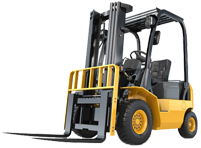
Your Forklift Career...
Starts Here!
To Forklift Training Employment America, where you’ll easily find
all the information and resources you need to start your career
as a forklift operator. Here you’ll find your state or provincial training requirements, information on forklifts and forklift job listings.
And all of this information is FREE to you!
Español
English
Forklift Topics
Popular Articles
Recent Posts
Forklift Basics - Parts of the Counterbalance Forklift
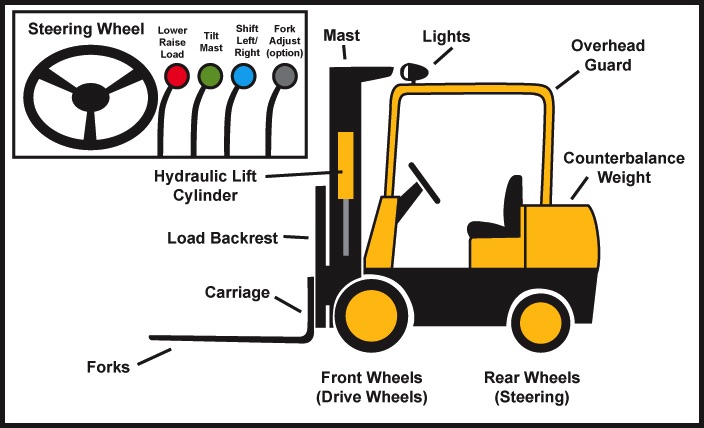
How a Forklift Works
The forklift works using the cantilever principle. A load on
the forks supported by a fulcrum (the front wheels) will
be counterbalanced by a weight on the other side. The forklift
body and the counterbalance weight. When the forklift is
unloaded or the loaded forks are on the ground, the center
of gravity (The red dot) will be located near the middle of the
forklift, within the stability triangle. (Fig A)

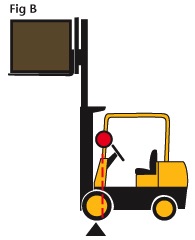
When the forklift raises the load to its maximum height,
the center of gravity (red dot) will move as well within
the stability triangle. It is at this point that it is very
important to be extra careful operating the forklift as you
can be reaching the limits of the stability triangle. You should
avoid driving quickly, sharp turns and long distances in this
situation as the forklift can possibly tip over. (Fig B)
And in this example (Fig C) shows what will occur when
the load is shifted forward on the forks and the forklift
is raised to it’s full height - here the center of gravity has
shifted forward and is now past the stability triangle.
At this stage, it is now likely the forklift will now tip over.


The Stability Triangle
When at rest, on level ground, the forklift's center of gravity is within the stability triangle. But if the
forklift is put in motion, or sits on a sloping surface, its center of gravity shifts. Any time the forklift's center of gravity moves outside the stability triangle, the lift will tip over. As an operator, you must always be aware of the stability triangle and never exceed the limits of your machine.
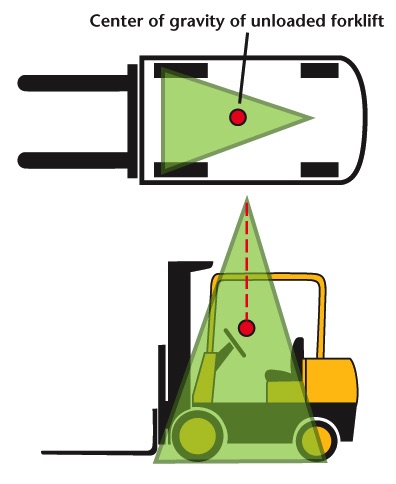
Basic Forklift Controls

STEERING - Unlike a car, a forklift will usually have it’s rear wheels be the ones that steer as the
front wheels are the drive wheels. This will enable the forklift to rotate in a perfect circle.
Remember the pivot point is in the front wheels. Be sure to look for clearance in the rear of the
forklift as it swings in either direction.

LOWER OR RAISE LOAD LEVER - Usually the first control lever next to the steering wheel, this will raise or lower the mast of the forklift and raise the forks and the load. Pull back on the lever
to raise the load and push forward to lower it.

TILT MAST LEVER - Usually the second control lever next to the steering wheel, this will tilt the mast forward or backward.
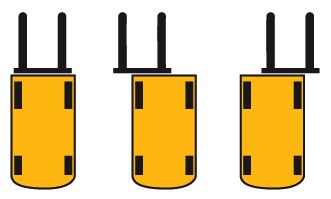
SHIFT FORKS LEVER - Moving this lever will adjust the front forks either to the left or the right. This will allow you to position your load to its location without having to maneuver the forklift itself.
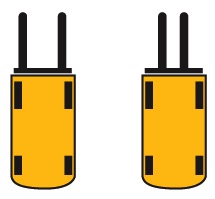
ADJUST FORKS LEVER - Moving this lever will move the forks inward or outward.
This is often an option on some forklifts.
Otherwise, you will have to adjust the forks by hand.
Home • Terms of Use • DMCA Policy • Privacy Policy • Affilliate Disclosure
All content ©2016 forkliftnow.com
